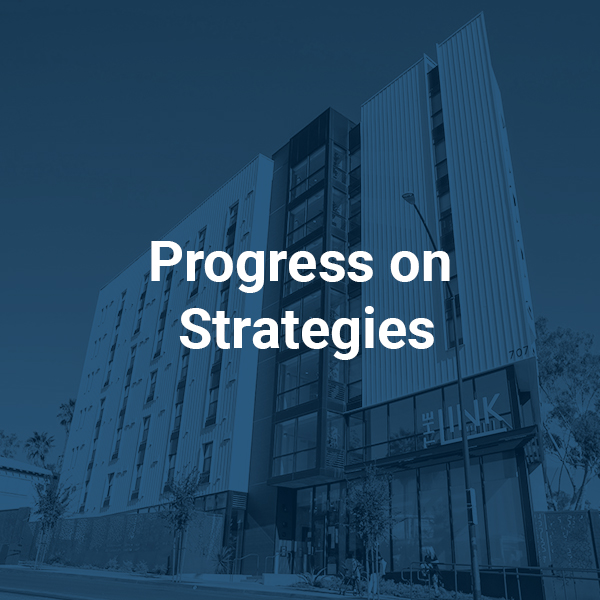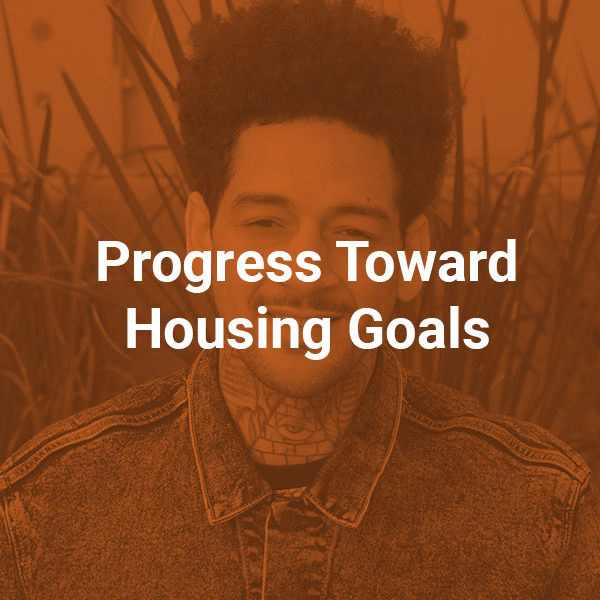Click the buttons below to view performance data on progress towards the Action Plans goals within reach, progress on strategies, and progress toward housing goals.
Progress On Strategies
Click on the links below to view performance data. The Action Plan identifies three goals and five strategies that should be tracked and reported. Narrative accomplishments related to the five strategies can be viewed under “Activity Accomplishments.” Performance data related to three of the five strategies can be found by clicking the links below.
- Decrease inflow through increase of prevention and diversion.
- Improve the performance of the existing system.
- Increase the production of/access to permanent solutions.



